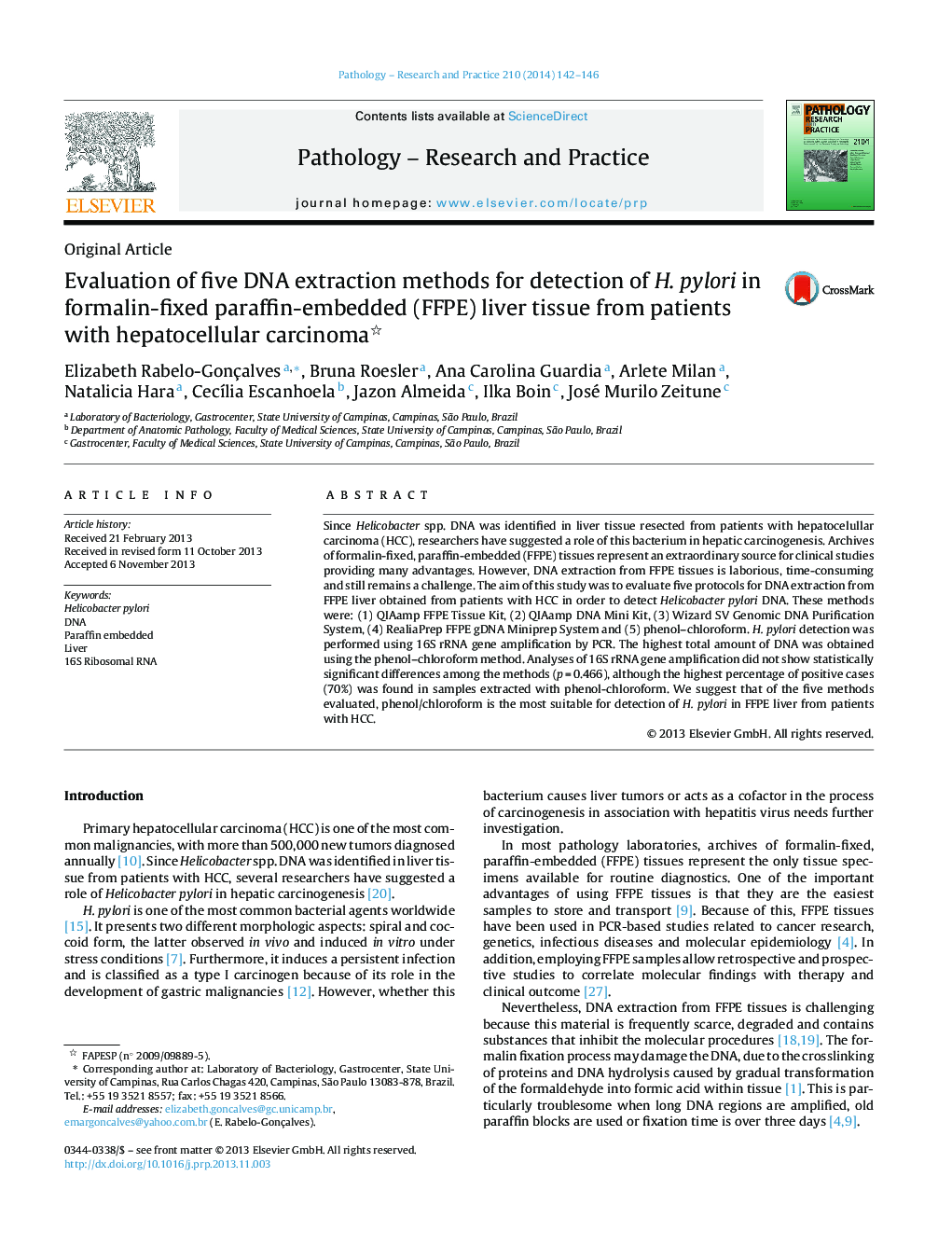| Article ID | Journal | Published Year | Pages | File Type |
|---|---|---|---|---|
| 2155474 | Pathology - Research and Practice | 2014 | 5 Pages |
Since Helicobacter spp. DNA was identified in liver tissue resected from patients with hepatocelullar carcinoma (HCC), researchers have suggested a role of this bacterium in hepatic carcinogenesis. Archives of formalin-fixed, paraffin-embedded (FFPE) tissues represent an extraordinary source for clinical studies providing many advantages. However, DNA extraction from FFPE tissues is laborious, time-consuming and still remains a challenge. The aim of this study was to evaluate five protocols for DNA extraction from FFPE liver obtained from patients with HCC in order to detect Helicobacter pylori DNA. These methods were: (1) QIAamp FFPE Tissue Kit, (2) QIAamp DNA Mini Kit, (3) Wizard SV Genomic DNA Purification System, (4) RealiaPrep FFPE gDNA Miniprep System and (5) phenol–chloroform. H. pylori detection was performed using 16S rRNA gene amplification by PCR. The highest total amount of DNA was obtained using the phenol–chloroform method. Analyses of 16S rRNA gene amplification did not show statistically significant differences among the methods (p = 0.466), although the highest percentage of positive cases (70%) was found in samples extracted with phenol-chloroform. We suggest that of the five methods evaluated, phenol/chloroform is the most suitable for detection of H. pylori in FFPE liver from patients with HCC.
